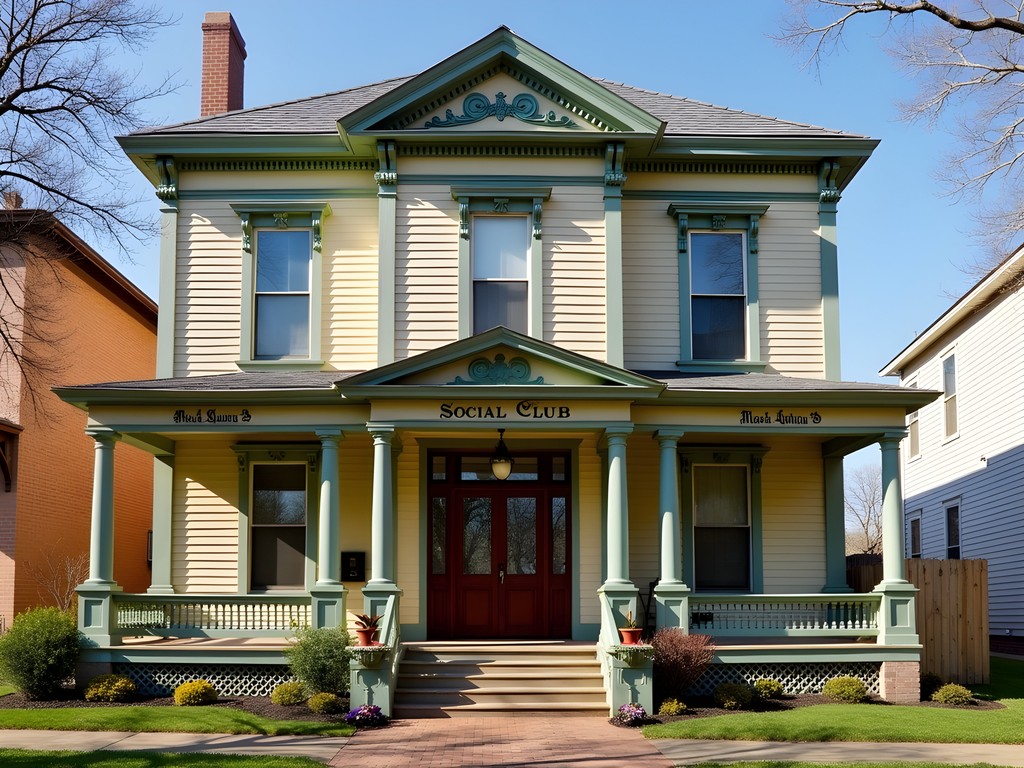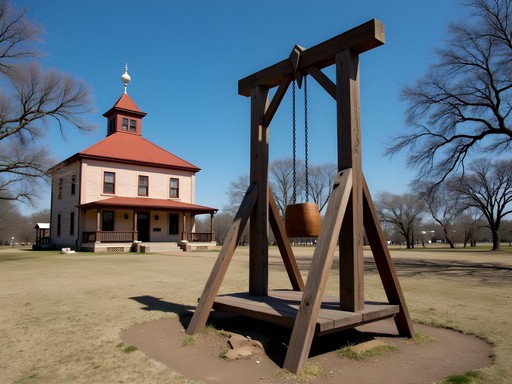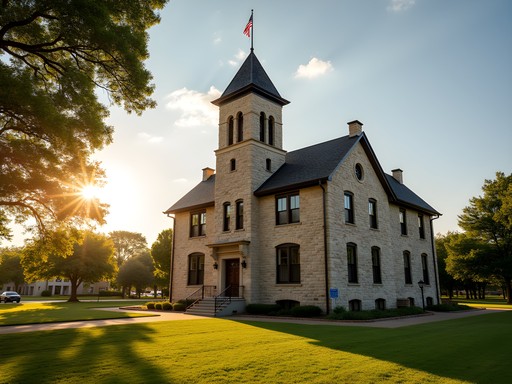Disclosure: This article contains affiliate links. We may earn a commission from purchases at no extra cost to you, which helps our travel content.
Standing in the shadow of Fort Smith's imposing gallows, I felt the weight of history press against my chest. As both a social worker and history enthusiast, I'm drawn to places where human stories intersect with pivotal moments in our collective past. Fort Smith, Arkansas—once the final outpost of law and order before the untamed frontier—holds these intersections in abundance. The town where 'hanging judge' Isaac Parker dispensed swift justice and where lawmen like Bass Reeves became legends offers more than just Wild West nostalgia; it provides a profound window into America's complex relationship with justice, expansion, and the human cost of taming the frontier.
The Fort Smith National Historic Site: Where Justice Met the Frontier
My exploration began at the Fort Smith National Historic Site, which encompasses the remains of two frontier forts and the federal courthouse where Judge Isaac Parker presided from 1875 to 1896. The site's centerpiece is the restored courtroom where Parker sentenced over 160 men to death, earning his notorious 'hanging judge' moniker.
Walking through the courthouse, I was struck by the meticulous preservation work. The courtroom's polished wooden benches and judge's bench stand in stark contrast to the harsh realities they witnessed. A park ranger named Tom, whose family has lived in Fort Smith for generations, shared insights that wouldn't appear in any guidebook.
'People often misunderstand Judge Parker,' he explained as we stood in the courtroom. 'He wasn't bloodthirsty—he believed the certainty of punishment would bring order to a lawless territory. Many forget he opposed capital punishment personally but felt bound by the laws he swore to uphold.'
The adjacent jail—known grimly as 'Hell on the Border'—offers a sobering glimpse into the conditions prisoners endured. The cramped, windowless cells housed up to 50 men at once, often for months as they awaited trial. I recommend bringing a small flashlight to better examine the prisoner graffiti etched into the walls—haunting messages that humanize the men who awaited judgment here.

💡 Pro Tips
- Visit early in the morning to avoid crowds and experience the solemn atmosphere
- Take the ranger-led tour for stories not found on the information plaques
- Allocate at least 2-3 hours to fully appreciate the site's historical significance
Bass Reeves and the Untold Stories of the Western Frontier
Perhaps no figure embodies Fort Smith's complex history better than Deputy U.S. Marshal Bass Reeves, one of the first Black deputy marshals west of the Mississippi. Born into slavery, Reeves became one of Judge Parker's most effective lawmen, reportedly arresting over 3,000 outlaws without ever being wounded.
A 25-foot bronze statue of Reeves stands proudly in downtown Fort Smith's Pendergraft Park, commemorating this remarkable American whose story remained largely untold for decades. As I stood before it, I thought about how history chooses which stories to elevate and which to erase.
I spent an afternoon at the Fort Smith Museum of History, where exhibits on Reeves and other marshals provide crucial context to understand this pivotal era. The museum houses an impressive collection of artifacts, including original wanted posters, badges, and weapons that marshals carried into Indian Territory.
Before visiting these sites, I recommend reading Black Gun, Silver Star, which provided me with valuable insights into Reeves' extraordinary life and the racial complexities of law enforcement in the post-Civil War West.
As a social worker who has studied trauma in communities, I found myself contemplating how the justice system of that era—however flawed—shaped the development of American identity and our ongoing conversation about justice reform.

💡 Pro Tips
- Visit the Bass Reeves statue at sunrise or sunset for dramatic photography opportunities
- Check the Fort Smith Museum of History's schedule for special exhibits on frontier lawmen
- Look for the smaller exhibits on Cherokee, Choctaw and other tribal nations' perspectives on frontier justice
Belle Starr, Miss Laura's, and the Social Fabric of a Frontier Town
Beyond its courthouses and jails, Fort Smith's historical landscape reveals a rich tapestry of social history that particularly resonates with my background in social work. The town's infamous 'Row' once housed saloons and brothels that served the transient population of soldiers, traders, and outlaws.
Miss Laura's Social Club, now the city's visitor center, stands as the only former brothel on the National Register of Historic Places. The Victorian mansion has been meticulously restored to its 1903 appearance, offering a glimpse into a part of frontier life often sanitized from family-friendly historical accounts.
During my visit, I was fascinated by the stories of women like Belle Starr, the notorious 'Bandit Queen' who frequented Fort Smith for court appearances. The complexity of these women's lives—navigating a male-dominated society through both conformity and rebellion—offers important perspectives on gender and agency in the American West.
For families visiting with children, I recommend picking up a Junior Ranger activity book at the visitor center. These thoughtfully designed activities help younger visitors engage with history at an appropriate level while still acknowledging the full spectrum of frontier society.
The town's trolley tour provides an excellent overview of these sites, particularly valuable during spring when the weather can be unpredictable. I found the pocket rain jacket I packed to be essential during an unexpected afternoon shower that caught me between historical sites.

💡 Pro Tips
- Visit Miss Laura's early in your trip as the staff can provide excellent orientation to other historical sites
- The trolley tour offers a good overview if you're short on time or traveling with those who can't walk long distances
- Look for the historical markers throughout downtown that note locations of famous captures and shootouts
The Trail of Tears & Fort Smith's Native American Connections
No exploration of Fort Smith would be complete without acknowledging its significant place in Native American history. The city served as a key waypoint on the Trail of Tears, when thousands of Cherokee, Choctaw, Creek, Chickasaw, and Seminole people were forcibly relocated from their ancestral homelands.
At the Trail of Tears Overlook along the Arkansas River, I spent a quiet morning reflecting on this painful chapter of American history. The site offers interpretive panels explaining Fort Smith's role in this forced migration and provides context that connects to the later establishment of Indian Territory (now Oklahoma).
As someone who has worked with communities processing historical trauma, I found this site particularly moving. The juxtaposition of Fort Smith as both enforcer of federal law and participant in the displacement of Native peoples illustrates the contradictions at the heart of America's westward expansion.
The nearby Cherokee Casino offers the unexpected benefit of housing several excellent exhibits on Cherokee history and culture. While there, I picked up a copy of Cherokee America, a historical fiction work that provides rich context about the complex relationships between Native communities, white settlers, and freed slaves in this region.
For those wanting to deepen their understanding of this aspect of Fort Smith's history, I recommend bringing a field notebook to record reflections and observations. My practice of journaling while traveling helps me process complex historical sites like these, especially when they connect to my professional interest in community healing and cultural preservation.

💡 Pro Tips
- Visit the Trail of Tears Overlook early morning or evening for a more contemplative experience
- Look for special programs at the National Historic Site that feature Native American perspectives
- Check if any cultural events at the Cherokee Casino align with your visit dates
Final Thoughts
As my weekend in Fort Smith drew to a close, I found myself sitting on a bench near Judge Parker's courtroom, watching families explore the grounds where such consequential history unfolded. This modest Arkansas city offers something increasingly rare in our era of sanitized historical tourism—an unflinching look at both the noble and troubling aspects of America's frontier past. The stories of Judge Parker, Bass Reeves, Belle Starr, and countless unnamed prisoners, soldiers, and displaced Native peoples converge here, creating a complex narrative that resists simple moral conclusions.
For families seeking meaningful educational experiences, Fort Smith provides fertile ground for discussions about justice, racial equality, and the human impact of westward expansion. As a social worker who has seen how understanding history helps communities heal, I believe places like Fort Smith offer valuable opportunities to engage with our collective past honestly.
I left with a deeper appreciation for how frontier justice shaped American identity and how its echoes continue to resonate in our contemporary conversations about law enforcement, judicial reform, and reconciliation with Native communities. Whether you're a history enthusiast, a family seeking educational travel, or someone interested in the complex tapestry of American identity, Fort Smith rewards those willing to look beyond the simplistic myths of the Wild West.
✨ Key Takeaways
- Fort Smith offers an unvarnished look at frontier justice through exceptionally preserved historical sites
- The stories of figures like Bass Reeves provide crucial perspectives often missing from Wild West narratives
- The city's location at the intersection of multiple historical currents makes it an unusually rich destination for thoughtful travelers
- Family visitors will find age-appropriate ways to engage with complex history through Junior Ranger programs and interactive exhibits
📋 Practical Information
Best Time to Visit
Spring (April-May) when temperatures are mild and gardens are blooming
Budget Estimate
$200-300 for a weekend (lodging, food, and activities)
Recommended Duration
2-3 days
Difficulty Level
Easy















Comments
wanderlustway
I visited Fort Smith last year and was blown away by the Bass Reeves statue. As an African American, seeing his story finally being told was so meaningful. I bought this book after my visit and couldn't put it down. The whole experience made me realize how many important stories from the frontier era have been overlooked in our history lessons.
Lionel Rose
Thanks for sharing that! The Bass Reeves story really is incredible - I'm glad his contributions are finally getting recognition. That statue is powerful, isn't it? Really captures his strength and dignity.
Taylor Moreau
Excellent write-up on Fort Smith! I visited while researching for my book on American frontier towns last year. For anyone planning a visit, I'd recommend allowing at least 2-3 hours for the National Historic Site alone - there's so much to absorb. Also, the staff historians give talks on weekends that provide incredible context about Judge Parker's complicated legacy. The Belle Starr section of your post was particularly insightful - she's often reduced to caricature in popular culture.
wildvibes
Those photos of Judge Parker's courtroom are incredible! Really captures the atmosphere.
nomadwalker
Great post! Is Fort Smith suitable for kids? My 10-year-old is obsessed with Wild West history but I'm worried the gallows might be too intense.
Riley Griffin
I took my kids (8 and 11) last summer and they loved it! The site does a good job balancing the harsher realities with age-appropriate explanations. There's a junior ranger program that's perfect for a 10-year-old. My kids were fascinated by the stories of the deputy marshals more than anything else.
nomadwalker
Thanks Riley! That's really helpful. I'll look into the junior ranger program.
blueguy
My grandfather grew up near Fort Smith and used to tell us stories about "Hanging Judge" Parker that his own grandfather passed down. Reading your post brought back memories of those stories. I finally visited last year and brought my history guidebook which had some fascinating details about Belle Starr that weren't covered in the museum. The connection between frontier justice and social systems is fascinating - thanks for highlighting that perspective!
Douglas Bradley
Fantastic write-up on Fort Smith, Lionel! I visited last year while researching frontier justice systems for my blog series on historical American landmarks. The Bass Reeves statue downtown is truly impressive - it's about time this remarkable lawman gets the recognition he deserves. The juxtaposition of Parker's harsh justice against the backdrop of frontier chaos makes for such a compelling historical narrative. I found the jail cells particularly haunting - standing in those spaces knowing the condemned prisoners once awaited their fate there. Did you have a chance to visit the Fort Smith Museum of History just a few blocks away? Their collection of frontier-era artifacts adds another layer to understanding the daily life beyond the courtroom dramas. I used the Fort Smith Historical Guide which had some excellent walking tours connecting all the historical dots around town.
Lionel Rose
Thanks Douglas! I did visit the Museum of History but didn't have space to include it in this post. You're right - it adds crucial context to the everyday frontier experience. Those jail cells were definitely sobering. As a social worker, I couldn't help but reflect on how our justice system has evolved since Parker's time.
HistoryHiker22
Just want to chime in - I visited Fort Smith last summer and was blown away by how well they've preserved everything. The gallows reconstruction is chilling. Did either of you catch the Bass Reeves documentary they sometimes show in the visitor center?
Douglas Bradley
I did see that documentary! Really well done and filled in a lot of gaps in the historical record. There's talk of a major streaming service working on a Bass Reeves series too, which should bring even more attention to Fort Smith's significance.
wildguy
Those gallows photos are haunting. Powerful piece.
greenbuddy
This looks amazing! How much time would you recommend spending at the Fort Smith National Historic Site to really take it all in? Planning a road trip through Arkansas next month.
Lionel Rose
Hi greenbuddy! I'd recommend at least 3-4 hours for the Historic Site if you want to really absorb everything. The gallows, Judge Parker's courtroom, and the exhibits on Bass Reeves alone are worth a solid hour. If you're a history buff, you might want to make it a full day and include Miss Laura's and the Trail of Tears overlook too!
greenbuddy
Thanks so much! Will definitely plan for a full day there. Did you find the guided tour worth it?
Lionel Rose
Absolutely! The rangers are incredibly knowledgeable. I learned details about Judge Parker's court cases I would have completely missed on my own.
wildrider
Great post! I've been wanting to visit Fort Smith with my kids (10 and 12) who are going through a Wild West phase. Do you think the historic sites would be interesting for them or too heavy with the gallows and all that? Any kid-friendly spots you'd recommend?
Lionel Rose
The National Historic Site actually has some excellent junior ranger programs! The staff does a great job making history accessible without sanitizing it too much. My friend's kids loved the interactive exhibits about U.S. Marshals. There's also a trolley tour that might be perfect for your family!
wildrider
That sounds perfect - thanks for the tip about the junior ranger program! Definitely adding this to our spring break plans.
backpacknomad
I visited Fort Smith last summer and was completely blown away by Judge Parker's courthouse. There's something eerie about standing in that courtroom knowing how many life-or-death decisions were made there. Did you get a chance to see the Bass Reeves statue downtown? That was probably my favorite part of the whole trip - learning about the real lawmen of the West instead of just the Hollywood version.
Sophia Gomez
The Bass Reeves statue is incredible! I was there in August and spent almost an hour just sitting nearby, thinking about what it must have been like to be in his position during that era. Fort Smith really does an excellent job honoring the complex history of the region.
backpacknomad
Absolutely! I was surprised how much the city embraces its complicated past instead of glossing over it. Makes for a much more meaningful visit.
Venture X
Premium card with 2X miles, $300 travel credit, Priority Pass